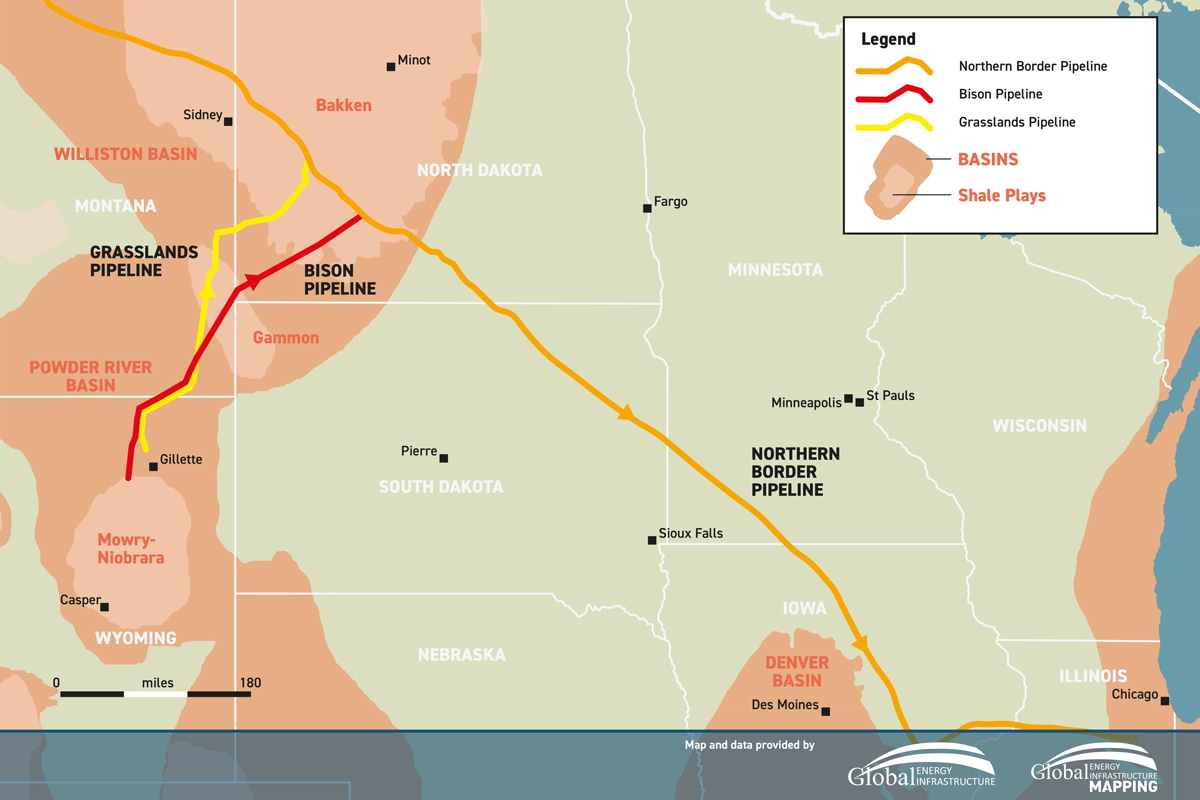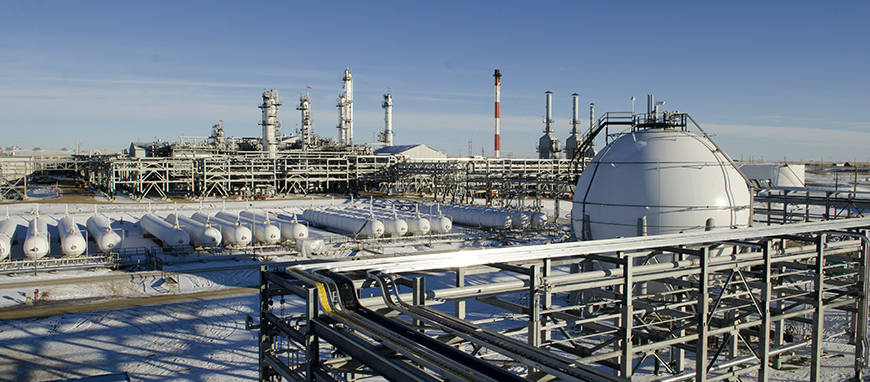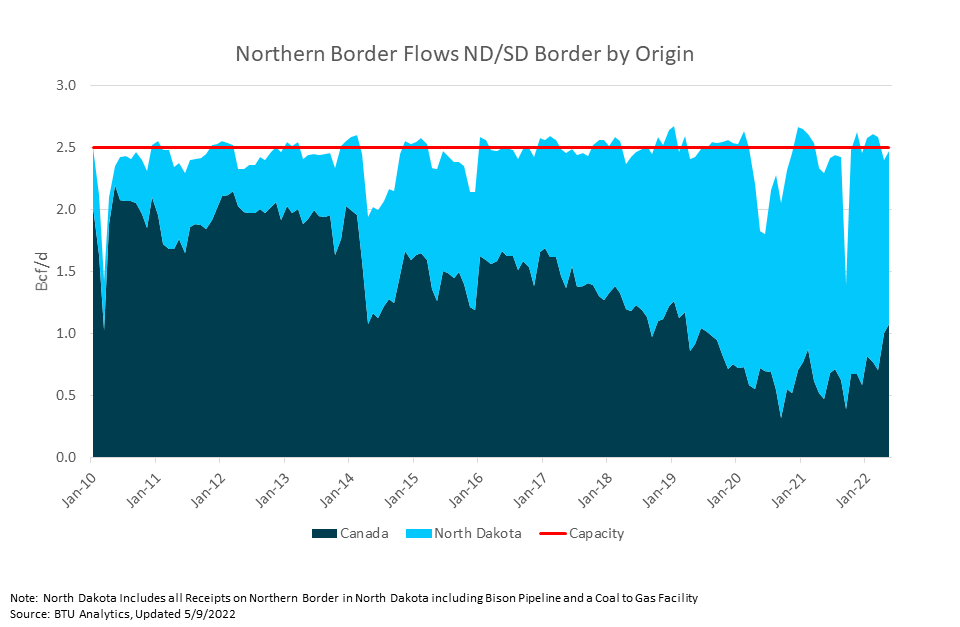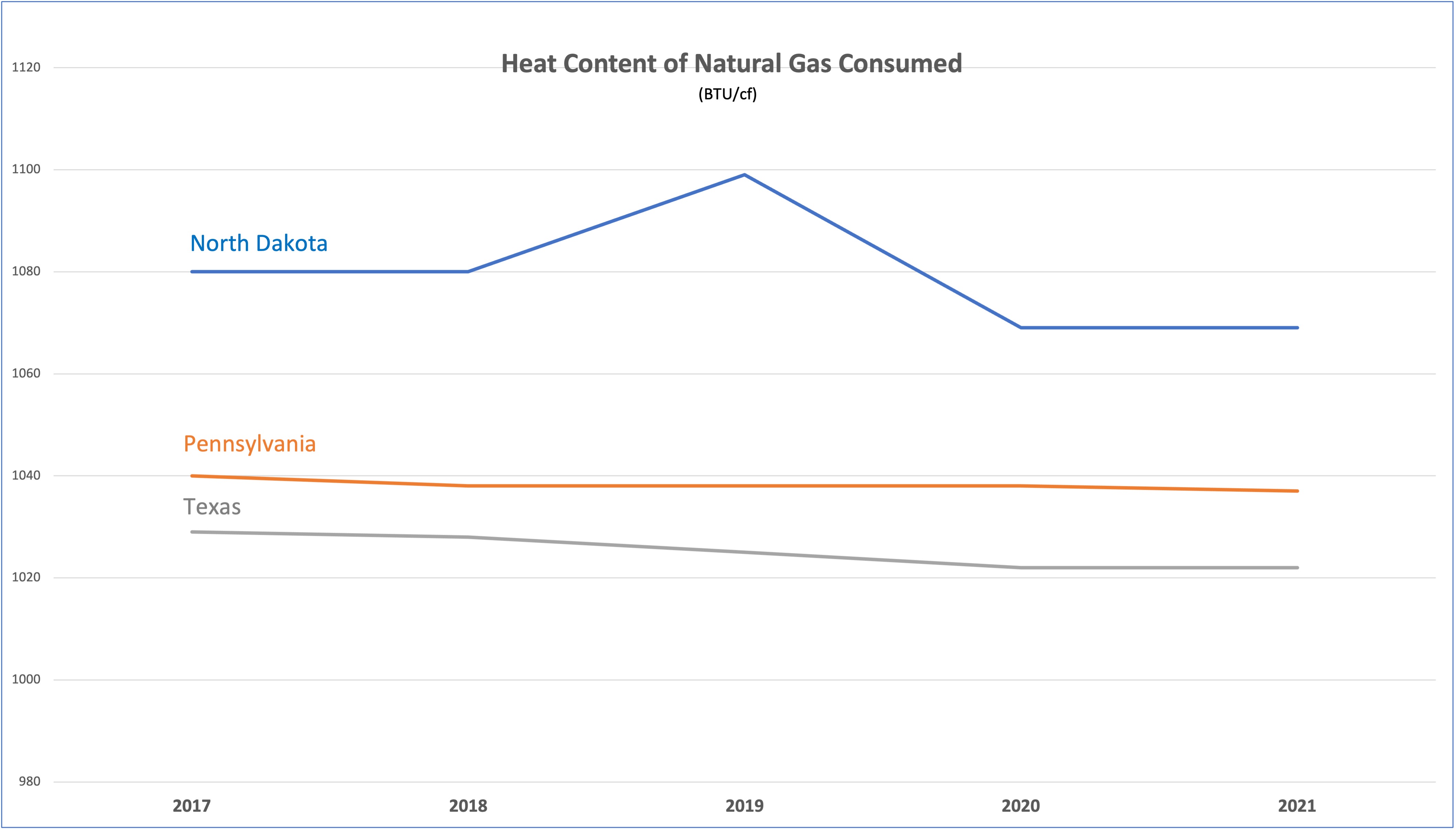February 2023, Vol. 250, No. 2
Features
Expanding Gas Infrastructure Presents Alternative to Permian Constraints
By Jeff Awalt, P&GJ Executive Editor
(P&GJ) — Oil is still serious business in the Bakken Shale, but when it comes to midstream, the money is on natural gas.
Driven mostly by U.S. production growth concentrated around the oil-generating geology of North Dakota, the Williston Basin’s midstream footprint has expanded according to the region’s unique and evolving needs.
Gas-to-oil ratios have flipped in the Williston Basin over the past six years, increasing more than 90% since 2016 from 1.51 MMcf/d to 2.8 MMcf/d per of oil produced. Drilling activity in the Bakken shale is nearly four times higher than it was two years ago.
As in the Permian Basin, oil production in the Williston has a high rate of associated natural gas. But the Bakken’s residual gas is rich in natural gas liquids (NGLs), and that requires infrastructure generally more akin to North Texas’ Barnett Shale than West Texas’ Permian.
Rich Gas
North Dakota’s natural gas is chock full of ethane, and that dictates many of its midstream demands for both pipeline egress and processing capacity. When natural gas production outpaces midstream capacity, natural gas flaring goes up – and the Bakken is famous for it.
Expanded fractionation capacity has helped the Williston dramatically reduce flaring in recent years from 36% in 2014 to about 5% in 2022. Impressive as that is, North Dakota still has a higher flaring intensity than other basins at about 150 MMcf/d.
And, because ethane has a higher heat content than methane, Bakken pipeline operators have to mind their BTUs.
“More ethane in the mix forces people to recover more NGLs in the Bakken,” East Daley Analytics Co-founder and Chief Strategy Officer Justin Carlson noted in a January interview with P&GJ. “If you reject more natural gas liquids, it will raise the Btus on your pipeline.”
Infrastructure additions have helped reduce ethane rejection and deliver more natural gas and NGLs to market, but systems like Northern Border Pipeline (NBPL) must be managed to keep heat in check.
“(If) the Btu level gets too high and downstream markets start raising issues, then we always have the option to recover ethane to lower it back,” Oneok’s chief commercial officer, Kevin Burdick, said of NBPL during the Oneok’s November conference call, its most recent at issue deadline. “That would be at full rates, not an incentivized rate.”
TC Energy and a unit of Oneok each own 50% of NBPL.
“With respect to heat rates, notwithstanding the higher flows that we’ve seen on the northern Border system coming out of the Bakken, Btu factors remain in line roughly in the 1,070 to 1,090 range. So long as they stay below 1,100 Btus, there are no issues,” Stan Chapman, TC Energy’s president of U.S. and Mexico Natural Gas Pipelines, said in that company’s November conference call.
“To the extent that we see ethane rejection or higher Btu rates across the system start to appear, then we’ll have to get back together with our customers and perhaps go back to FERC (U.S. Federal Energy Regulatory Commission) again. But as of right now, it’s not an issue.”
Midstream Buildout
North Dakota’s largest processor of natural gas, Oneok led the recent spate of midstream growth in the Williston Basin with the construction of its 900-mile Elk Creek NGL pipeline, which was completed in 2019. That project added 240,000 bpd of unfractionated NGL takeaway capacity from the basin, supporting increased gas production in the Bakken.
The company’s $400 million Bear Creek natural gas processing plant expansion and related infrastructure in Dunn County, North Dakota increased the company’s Williston Basin gas processing capacity to more than 1.6 Bcf/d in 2021. That expansion was designed to produce 25,000 bpd of NGLs in ethane rejection, resulting in 225,000 bpd of raw feed contracted since the project was announced in 2019.
Construction of the company’s $140 million Demicks Lake III natural gas processing facility in McKenzie County, North Dakota, was still underway in late January and scheduled for completion by the end of the first quarter of 2023. The 200-MMcf/d project will increase Oneok’s Williston Basin processing capacity to about 1.9 Bcf/d.
Those and other gas-oriented growth projects by Oneok, WBI Energy, Hess and Outrigger Energy have been well-timed with expanding Bakken production.
In January 2023, the number of rigs operating in the Bakken increased by one from December to a total of 42. That’s up from 27 rigs in January 2022 and 11 at the start of 2021. Some producers were struggling to find completion crews by late 2022, according to East Daley’s Carlson.
The region’s expanded takeaway capacity could bring a near-term boost to the Bakken if some Permian producers begin to curb output due to natural gas pipeline takeaway constraints, J.P. Morgan analyst Jeremy Tonet said in January.
The Bakken’s high rig count points to steady production as winter storms wane, Tonet said, adding that Oneok “clearly possesses the highest Bakken-rich gas/NGL volume operating leverage, with significant torque to NGL volume growth and incremental ethane extraction.” His comments accompanied J.P. Morgan’s upgrade of Oneok shares to Overweight from Neutral.
One project contributing to Oneok’s improved Bakken outlook was the 150,000-bpd expansion of its Arbuckle II Y-Grade Pipeline in 2020. Other key midstream companies benefiting from recent natural gas and NGL expansion projects in the Bakken include:
- Hess Midstream Partners’ 150-MMcf/d expansion of its Tioga natural gas processing plant. The project, completed in 2021, added residue and y-grade liquids processing capacity to the full fractionation and ethane extraction capability of the plant. The $150 million expansion of the Tioga plant and earlier upgrades to the Little Missouri 4 plant increased Hess Midstream’s net processing capacity in the Bakken to 500 MMcf/d.
- WBI Energy’s $220 million expansion of its North Bakken Pipeline, competed in February 2022. The project added 80 miles of mostly 20-inch natural gas pipeline to connect the company’s Tioga Compressor Station with Northern Border Pipeline’s mainline at a new interconnection point south of Watford City, North Dakota. It also included construction of the Elkhorn Compressor Station, additional compression horsepower at the Tioga station and other pipeline and measurement facilities.
- Outrigger Energy II’s $250-MMcf/d Bill Sanderson Gas Processing Plant expansion and construction of an 80-mile, 450 MMcfd rich-gas gathering system originating in eastern Williams County, North Dakota, and terminating at Sanderson plant near Williston. Completed in 2021, the expansion provides ethane recovery and rejection with direct market access to the Northern Border Pipeline system for residue gas and to the ONEOK NGL pipeline system for gas liquids.
Midstream companies are continuing to respond in 2023 to Bakken natural gas production growth with planned and potential projects to increase processing volumes, expand pipeline capacity or, in one case, reverse pipeline flows in response to regional trends.
Northern Border Pipeline
Bakken growth has been displacing Canadian volumes off the Northern Border system for nearly a decade, with only about 0.9 Bcf/d of the 2.5 Bcf/d flowing on the pipeline from Canada by 2022, according to BTU Analytics. Gas-driven midstream projects still on the horizon include a potential capacity boost of the 1,412-mile (2,272-km) NBPL.
TC Energy held a non-binding open season in the second quarter of 2022 to assess interest in an expansion of NBPL via horsepower additions to three North Dakota compressor stations. While the expansion of NBPL would only occur in North Dakota, it would enable NBPL to deliver 0.43 Bcf/d of natural gas into Bison Pipeline, which connects the Northern Border system to the Powder River Basin in Wyoming.
“We are still negotiating with our customers to get to definitive agreements,” Chapman said in the November investor call. “While it is taking a little bit longer to get that done, our in-service date of early 2026 and our capital estimates to get that project done haven’t moved.”
Bison Pipeline
The midstream response to Bakken natural gas growth goes beyond expansion projects. TC Energy is also looking to reverse the direction of gas on its 30-inch Bison pipeline.
The 420 Mcf/d Bison system went into service in 2011 to move Powder River Basin natural gas from Wyoming to midwestern markets. Although Bison continues to generate contractual revenue, changing natural gas dynamics in the U.S. Midwest have resulted in intermittent gas flows on Bison.
A reversal would allow TC Energy to transport Bakken gas into the Cheyenne market. While this appears to be the likely course for Bison, the company has said its business development activities would determine the best use for the system, including whether it can be “reversed, re-directed or re-purposed.”
Viking Pipeline
Oneok’s Viking Gas Transmission Company is preparing to add facilities to meet demand for incremental service on its pipeline system.
The Viking Project – Line MNB2204C involves construction of 14 miles of 12-inch pipeline and a new meter station, as well as the modification of existing infrastructure to support delivering 42,000 dekatherms per day of natural gas from existing receipt points on the Viking mainline to a new delivery location in Grand Forks, North Dakota.
More than 12 miles of the new pipeline is along an existing Viking pipeline corridor east of Grand Forks. About 1 mile of 12-inch pipeline and a new meter setting will be constructed in Grand Forks.
Oneok spokesperson Brad Borror confirmed in late January that construction is expected to begin in the third quarter of 2023, with an anticipated in-service date in the fourth quarter of 2023.
Grasslands South
WBI Energy’s Grasslands South Expansion Project will provide 94,000 dekatherms per day of firm natural gas capacity from a new receipt station at OKEOK’s Bear Creek natural gas processing facility in Dunn County, North Dakota, to a new interconnect with Big Horn Gas Gathering in Sheridan County, Wyoming.
The project includes construction of 15.3 miles of 12-inch diameter natural gas lateral pipeline from the Bear Creek Plant to WBI Energy’s existing Manning Compressor Station, with one valve setting midway.
Construction is scheduled to start this spring, the project is expected to in service by November 1, 2023.
Outlook
As Permian Basin natural gas takeaway capacity becomes increasingly constrained, some producers who operate in both regions may find the Bakken to be an attractive alternative until bottlenecks are addressed.
Overall Bakken trends remain positive for both oil and natural gas production, although high Midwest storage levels and limited capacity to Gulf Coast and West Coast markets caused a regional supply glut and a substantial drop in North Dakota gas prices in late January.
Oil production in the Bakken region increased by 20,000 bpd from December to January, while natural gas production grew by 33 MMcf/d during the same period, according to the U.S. Energy Information Administration’s January 2023 Drilling Productivity Report.
Carlson of East Daley has projected 9% natural gas production growth to 3.3 Bcf/d in 2023 from 3 Bcf/d in 2022, based on early January pricing, along with an expected 12% increase in oil production year over year.
The numerous midstream expansions completed through 2022 and expected projects in 2023 appear to have put Bakken’s midstream infrastructure ahead of that curve.










Comments